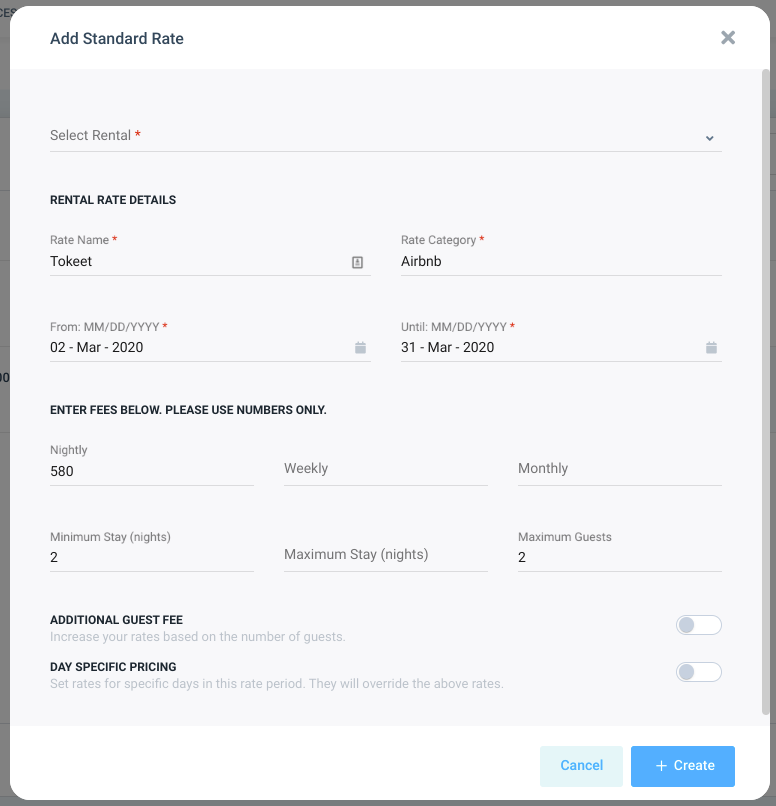To help in simplifying your rate structure, Sympl offers two types of rates you may use to manage your rental pricing.
Standard Rates
The first, and most common type, is the Standard Rate. A standard rate is an ongoing rate that describes the price of your rental over a specific date range. It's essentially like the rates you use now on FlipKey and HomeAway. The purpose of the standard rate is to allow you to specify your rates into the future and not have to change them.
The process for creating Standard Rates is easy with Sympl.
Navigate to RATES to open up your rates calendar.

Using the Edit button select either Add Standard Rate or Add Dynamic Rate.

Enter required info, add Rate Name and Select or create Rate Categories.


From Date: Select date from which the Rate is applicable
Until Date: Select date until which the Rate is applicable
Nightly: Add some nightly rate
Weekly: rate that is applied if the guest stays Monday through Sunday (optional).
Monthly: rate that is applied when a guest stays for an entire month (optional).
Minimum Stay: minimum amount of days guests are allowed to book
Maximum Stay: maximum amount of days that this rental can be booked
Maximum Guests
Additional Guest Fee: charge x amount for per person per night, above y guests
Day Specific Pricing: charge a different rate for certain days of the week. Please see this Help Center article for more info.
You can create overlapping Standard rates on the Sympl calendar. Sympl will automatically detect the overlaps and split the existing rates appropriately to accommodate the changes.
Base Rates
The second rate type to be aware of is the Base Rate. The base rate is set on your rental rate settings and will apply to all date ranges where there is not a Standard Rate already in place. It is recommended that you use Standard Rates for creating a rate plan due to the more advanced settings mentioned in the section above. For more information on how to set a Base Rate, please see the following article: What is a Base Rate?